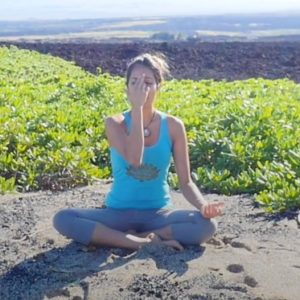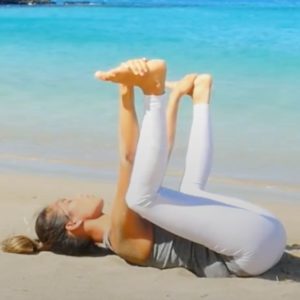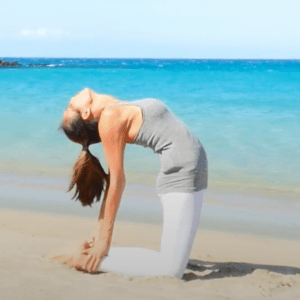Today’s Poses – Garland and Mountain Yoga Poses
Garland and Mountain Yoga Poses
Garland Yoga Pose
Hip flexibility is a common issue for many people today. Sitting for long periods can shorten and tighten the inner thighs, groin, and hip flexors — which can cause poor posture and back pain. Garland Pose is a hip-opening yoga posture that helps to lengthen and open the hips, creating more mobility for all of your daily activities.
Steps:
- Begin by standing at the top of your mat in Mountain Pose (Tadasana), with your arms at your sides. Step your feet about as wide as your mat.
- Bend your knees and lower your hips, coming into a squat. Separate your thighs so they are slightly wider than your torso, but keep your feet as close together as possible. If your heels lift, support them with a folded mat or blanket.
- Drop your torso slightly forward and bring your upper arms to the inside of your knees. Press your elbows along the inside of your knees and bring your palms together in a prayer position (Anjali Mudra). Work toward bringing your hands to your heart center and your forearms parallel to the floor.
- Lift and lengthen your torso, keeping your spine straight and shoulders relaxed. Shift your weight slightly into your heels.
- Hold for five breaths. To release, bring your fingertips to the floor. Then, slowly straighten your legs and come into Standing Forward Fold (Uttanasana).
Benefits
- Stretches the thighs, groin, hips, ankles, and torso.
- It tones the abdominal muscles and improves the function of the colon to help with elimination.
- This pose also increases circulation and blood flow in the pelvis, which can help regulate sexual energy.
- It improves balance, concentration, and focus.
- It is particularly beneficial for women who are pregnant, as it can later aid in childbirth.
Mountain Yoga Pose
The foundation of all standing poses, Mountain Pose makes a great starting position, resting pose, or tool to improve posture.
Steps
- Stand with your feet together and your arms at your sides. Press your weight evenly across the balls and arches of your feet. Breathe steadily and rhythmically. Draw your awareness inward. Focus on the present moment, letting all worries and concerns fade away.
- Press your big toes together (separate your heels if you need to). Lift your toes and spread them apart. Then, place them back down on the mat, one at a time.
- If you have trouble balancing, stand with your feet six inches apart (or wider).
- Drawdown through your heels and straighten your legs. Ground your feet firmly into the earth, pressing evenly across all four corners of both feet.
- Then, lift your ankles and the arches of your feet. Squeeze your outer shins toward each other.
- Draw the top of your thighs up and back, engaging the quadriceps. Rotate your thighs slightly inward, widening your sit bones.
- Tuck in your tailbone slightly, but don’t round your lower back. Lift the back of your thighs, but release your buttocks. Keep your hips even with the centerline of your body.
- Bring your pelvis to its neutral position. Do not let your front hip bones point down or up; instead, point them straight forward. Draw your belly in slightly.
- As you inhale, elongate through your torso. Exhale and release your shoulder blades away from your head, toward the back of your waist.
- Broaden across your collarbones, keeping your shoulders in line with the sides of your body.
- Press your shoulder blades toward the back ribs, but don’t squeeze them together. Keep your arms straight, fingers extended, and triceps firm. Allow your inner arms to rotate slightly outward.
- Elongate your neck. Your ears, shoulders, hips, and ankles should all be in one line.
- Keep your breathing smooth and even. With each exhalation, feel your spine elongating. Softly gaze forward toward the horizon line. Hold the pose for up to one minute.
Benefits
The deep back muscles extend from the skull to the base of the spine. The abdominal muscles work together with the back muscles to support the torso to keep you upright. The lower part of the trapezius muscle draws the shoulders down, away from the ears, and helps lift the chest.




